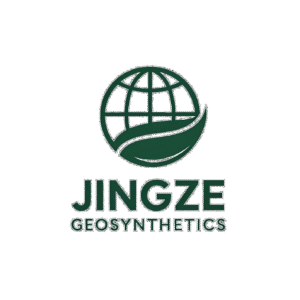Introduction
Nonwoven geotextile fabric is an essential material in modern geotechnical engineering, known for its superior filtration, drainage, and separation capabilities. Made from synthetic fibers entangled through needle punching or thermal bonding, this fabric is widely used in civil engineering, environmental applications, and infrastructure projects. In this guide, we explore its properties, benefits, applications, installation methods, and more.
What Is Nonwoven Geotextile Fabric?
Nonwoven geotextile fabric is manufactured from long or short staple fibers of polypropylene or polyester. Unlike woven geotextiles, these fibers are not interlaced but rather bonded through mechanical, thermal, or chemical means. The result is a porous, flexible, and highly functional fabric ideal for filtration and drainage.
🔍 Key Features and Specifications
- Excellent Filtration: Allows water to pass while preventing soil migration.
- High Permeability: Promotes efficient water drainage in various environments.
- Chemical and Biological Resistance: Withstands degradation in harsh environments.
- Flexibility and Conformability: Easily adapts to irregular surfaces.
- UV Resistance: Suitable for temporary outdoor exposure.
- Available in Different Weights: Typically ranges from 100g/m² to 1000g/m².
📌 Common Applications of Nonwoven Geotextile Fabric
💧 Drainage Systems
Used in subsurface drainage applications, such as French drains and trench drains, nonwoven geotextiles act as filters that allow water flow while retaining soil particles.
🛤️ Road and Pavement Construction
Nonwoven fabric separates subgrade and aggregate layers, improves load distribution, and enhances pavement durability.
🧱 Retaining Walls and Gabions
Prevents soil from clogging drainage aggregates while maintaining structural integrity.
🗑️ Landfills and Waste Management
Acts as a filter and cushion layer in landfill caps and liners, protecting geomembranes from punctures.
🌊 Coastal and River Engineering
Used in revetments, embankments, and shoreline protection to prevent erosion and promote drainage.
🌱 Landscaping and Green Roofs
Promotes water retention and soil stability while preventing root intrusion and soil washout.
🆚 Woven vs. Nonwoven Geotextiles
| Property | Woven Geotextile | Nonwoven Geotextile |
|---|---|---|
| Tensile Strength | Higher | Moderate |
| Filtration | Moderate | High |
| Permeability | Lower | High |
| Flexibility | Moderate | High |
| Best Use | Reinforcement | Filtration, Drainage |
👉 Tip: Use nonwoven fabric for drainage-intensive applications and environments with frequent water flow.
🛠️ Installation Guidelines for Nonwoven Geotextile Fabric
Step 1: Site Preparation
Clean the installation area of debris, sharp objects, and vegetation. Ensure a stable subgrade.
Step 2: Fabric Placement
Unroll the fabric over the prepared site. Avoid wrinkles and folds. Overlap edges by at least 30 cm (12 inches).
Step 3: Anchoring
Use U-shaped staples, anchor pins, or fill material to secure the fabric in place.
Step 4: Covering
Promptly cover with aggregate, soil, or other materials to protect the fabric from UV exposure.
Step 5: Quality Inspection
Check overlaps, anchoring points, and overall placement before final backfilling.
🧪 Case Study: French Drain Installation in California
A residential development in California faced waterlogging issues due to clayey subsoil. Engineers installed a nonwoven geotextile layer in French drains around the property. The result was a 75% improvement in drainage performance and a 60% reduction in maintenance needs over three years.
🌟 Advantages of Nonwoven Geotextile Fabric
- Efficient Water Flow and Soil Retention
- Long-Term Durability
- Prevents Soil Erosion
- Reduces Clogging in Drainage Systems
- Cost-Effective and Easy to Install
🔗 Internal and External Resources
- 📄 Nonwoven Geotextile Product Page
- 🛠️ Drainage Solutions with Geotextiles
- 🌐 External: Geosynthetics Research Institute
🧾 Conclusion
Nonwoven geotextile fabric is a versatile and effective solution for managing water flow, preventing erosion, and enhancing the longevity of civil engineering structures. Its superior filtration, permeability, and flexibility make it a staple in geotechnical and environmental projects. When selected and installed correctly, nonwoven geotextiles ensure reliable, long-term performance.
📬 Learn more at Jingze Geosynthetics. Contact us for samples, pricing, and custom solutions.

